Sewing notions are the unsung heroes of the crafting world, quietly working behind the scenes to transform fabrics into beautiful creations. Whether you’re just starting your sewing journey or have been stitching for years, understanding the role of these essential tools is key to success.
From the seemingly mundane yet crucial thread and needles to the intricate world of specialty notions like bias tape makers and presser feet, sewing notions are the building blocks of every project.
In this guide, we’ll delve into the diverse world of sewing notions, unraveling their unique functions and helping you choose the perfect ones to elevate your sewing skills and bring your visions to life.
1. Seam Ripper
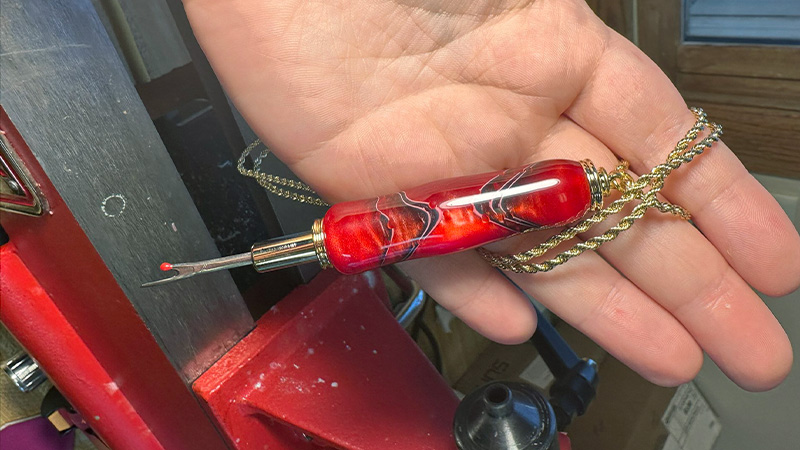
A seam ripper is a handy tool used by sewers and tailors for cutting and removing stitches. It consists of a handle, shaft, and head. The handle provides the user with a comfortable and secure grip.
The shaft is typically made of a strong and flexible material, such as metal, and helps guide the user’s hand when cutting. The head is usually forked, with a cutting surface located at the base of the fork.
This cutting surface is designed to easily and precisely cut through the stitches without damaging the fabric. Seam rippers are incredibly useful for a variety of sewing projects, from mending clothing to taking out seams in a garment to remove a zipper or hemline.
They can also be used to remove buttons, snaps, and other fasteners. Whether you are a seasoned seamstress or just starting out a seam ripper is an essential tool for any sewing kit.
2. Sewing Needle
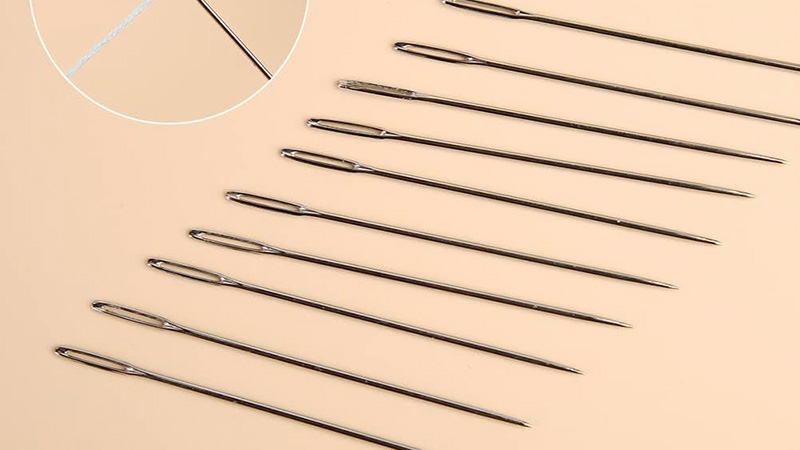
A sewing needle is an essential tool used in hand-sewing. It is a long and slender object that is pointed at one end. This pointed end is used to pierce the fabric and thread to complete a stitch.
The other end of the needle has a hole, also known as an eye, in which the sewing thread is placed. The earliest needles were made from bone or wood, but modern needles are usually made from high carbon steel wire.
To protect the needle from corrosion, it is often nickel- or 18K gold-plated. This helps to ensure that the needle will be able to withstand the constant use and wear and tear of sewing.
There are many different types of needles available, depending on the type of sewing project being undertaken. For example, a thick needle is often used for sewing heavy fabrics, whereas a thin needle is better suited to lighter fabrics.
Similarly, a sharp needle is usually used for hand-sewing delicate fabrics, while a blunt needle is more suitable for thicker materials.
No matter what type of needle is used, it is important to make sure it is kept clean and sharp.This will help to ensure a neat and precise finish to your hand-sewing project.
3. Tape Measure
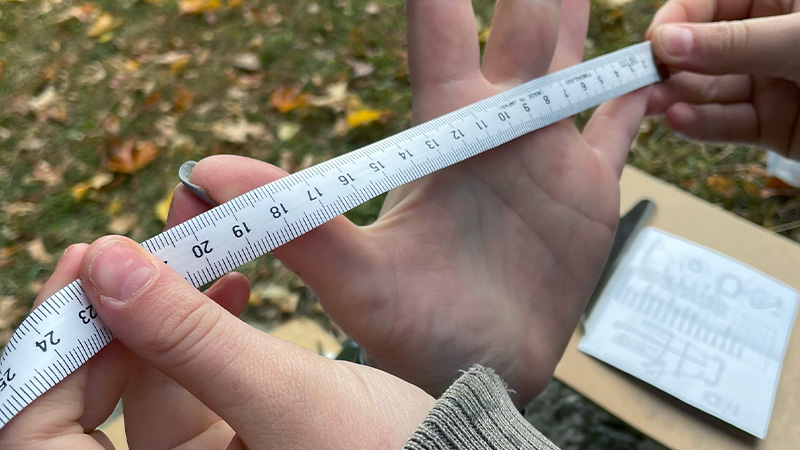
A tape measure is an essential tool used to measure the length or distance of an object. It is made up of a flexible strip of material such as cloth, plastic, fiberglass, or metal, and is marked with linear measurements.
The markings are usually in both metric and imperial units, allowing for precise measurements to be taken. The flexibility of the tape measure makes it ideal for measuring curved or irregularly shaped objects.
It also allows for measurements to be taken in tight spaces that may not be accessible with other tools. The tape measure has been around for centuries, making it one of the oldest measuring tools still in use today.
Its versatility and accuracy make it a popular choice for a variety of tasks. From carpenters to tailors, the tape measure has become an indispensable tool in the workplace.
It can also be a great help for everyday tasks at home, such as measuring furniture or planning a project. The tape measure is a simple but effective tool, and it is easy to use.
To take accurate measurements, simply extend the tape measure to the desired length and then read the markings.
When finished, simply retract the tape measure until it is back in its original position. The tape measure is a reliable tool that is sure to help with any measuring task.
4. Thread
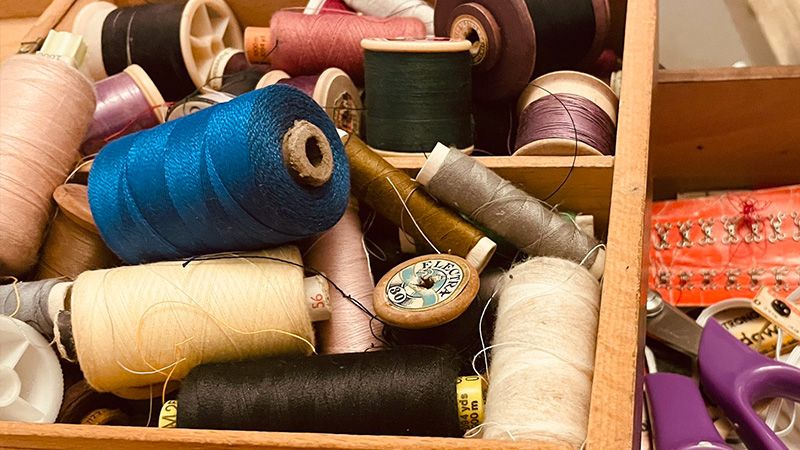
Thread is a slender and flexible strand of material used for a variety of purposes. It is often composed of multiple filaments or fibers twisted together and is most commonly used in fabric and clothing construction.
Thread can also be used to join two pieces of fabric together, as well as for decorative stitching, embroidery, and quilting. In ancient times, the Egyptians were renowned for their ability to spin and weave thread from plant fibers, wool, and hair.
They used the thread to create clothing, jewelry and even sails for their boats. The ancient Egyptians also used thread to decorate their tombs and temples with intricate patterns and designs. Thread has been used throughout history for a variety of purposes.
It has been used to create armor and weapons, to sew clothing, to make carpets and rugs, and even to make lace and trimmings for garments.
Thread is an essential component of the clothing industry, as it is used to stitch and join fabrics together. Thread is still used today in the same way it was used thousands of years ago.
It is a versatile material that is indispensable in the fashion and textile industries.
It is also used for a variety of craft and decorative purposes, from quilting to embroidery to crochet. Thread is an essential component of many items we use in our everyday lives, from clothing and accessories to furniture and home decor.
5. Rotary Cutter
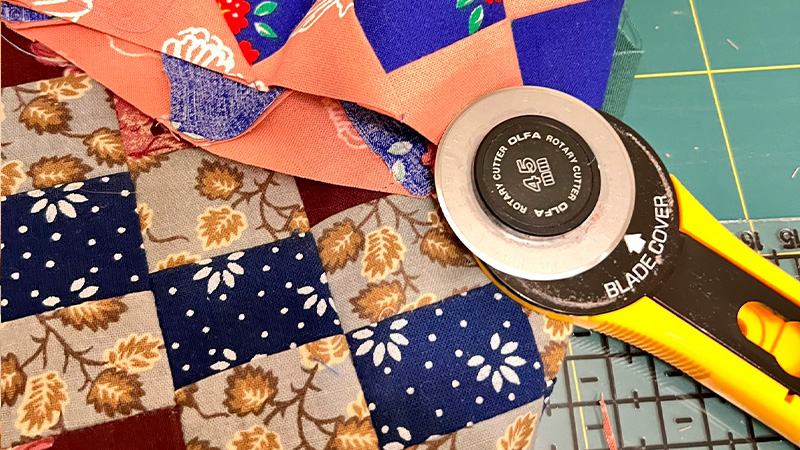
A rotary cutter is a tool used by quilters to cut fabric. It is a specialized cutting device that features a circular blade at the end of a handle. The blade is positioned so that it can rotate, hence the tool’s name.
The rotary cutter makes it easier for quilters to cut multiple layers of fabric at the same time in a straight line. It can also be used to create curved shapes or angled cuts.
The circular shape of the blade also allows for smooth, even cuts.
In addition, the rotary cutter is designed to help reduce the risk of injuries since it prevents the user’s fingers from getting too close to the blade.
This makes it safer to use than other cutting tools, such as scissors.
It is also a great time-saver since it can quickly cut through multiple layers of fabric in one go. All in all, a rotary cutter is an essential tool for quilters who want to achieve professional-looking results.
6. Sewing Machine Needle
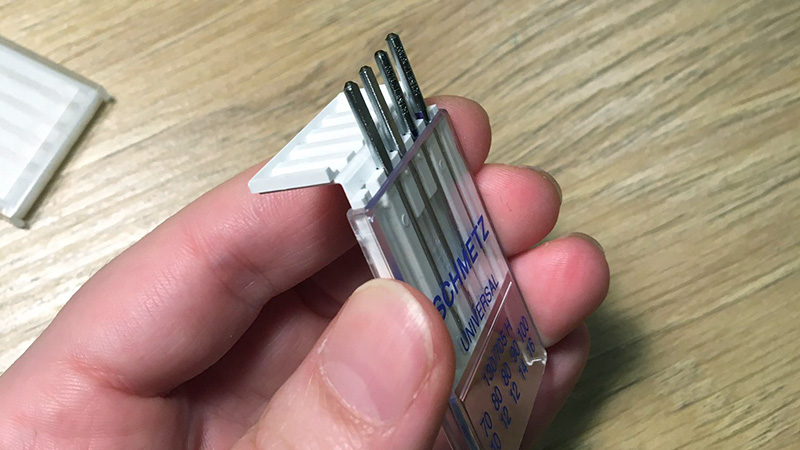
A sewing machine needle is an essential tool for any sewing machine since it is the part of the machine that actually does the stitching. The needle is composed of several parts, all of which are important for successful sewing.
The first part is the shank, which is held by the needle holder of the sewing machine. The shank is the thickest part of the needle and is responsible for keeping the needle straight while it is stitching.
The next part is the shoulder, which is the area between the shank and the point of the needle. The shoulder helps to ensure that the needle is properly set in the needle holder and also helps to guide the fabric smoothly through the machine.
The last part of the needle is the point of the needle, which is the sharp end that is used to penetrate the fabric.
The point is responsible for creating the stitches in the fabric, and it comes in several different types depending on the type of fabric that is being used. The different types of points include sharp, ballpoint, and stretch.
7. Scissors
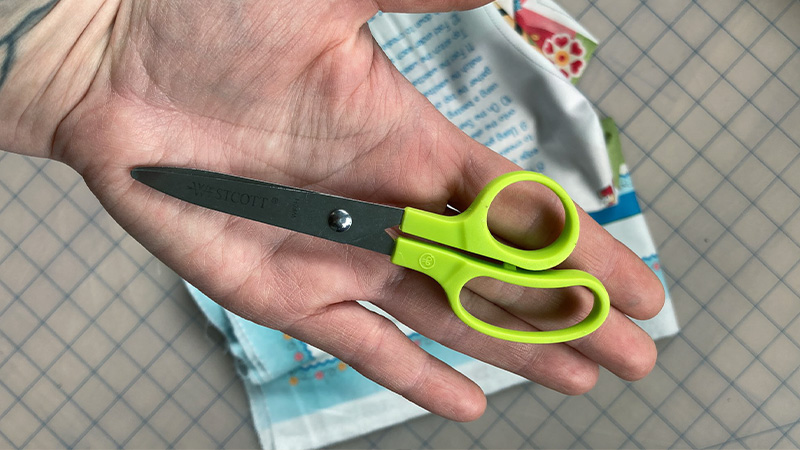
Scissors are a very common tool used for cutting a variety of materials. They are typically composed of two blades that are joined together at a pivot point.
The blades are made of metal and have sharpened edges that come together when the handles, which are opposite the pivot, are squeezed together. This allows the user to cut through materials such as paper, fabric, and even hair.
Scissors come in various sizes and shapes, with some designed for specific purposes such as fabric cutting or trimming hair. The sharpness of the blades and the ease of use make scissors a popular tool in many households.
8. Pin
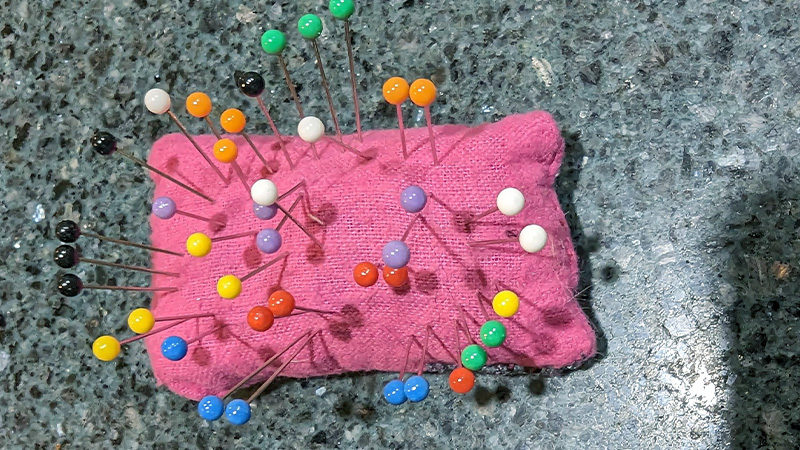
Pins are a simple yet versatile tool that can be used for a variety of tasks. They come in a variety of shapes and sizes and can be made of different materials such as metal, plastic, and wood.
The most common type of pin is the straight pin, which has a shaft made of rigid and inflexible material and a head at one end. This shaft is designed to be inserted into fabric or other materials in order to fasten them together.
Pins can also be used for decorative purposes.
Push pins are useful for displaying posters and other lightweight items. U-pins are commonly used to attach items to fabric or other materials and are often used for quilting and other craft projects.
Safety pins are also useful for attaching items together and can be used to secure clothing or other fabric items. There are also specialty pins designed for specific tasks.
Curved pins are often used to hold upholstery in place, while cotter pins are used to keep nuts and bolts from becoming loose. Hairpins are designed to hold hair in place and corsage pins are used to attach flowers and other decorative items to clothing.
No matter what type of pin you are looking for, there is sure to be a pin that will fit your needs. Pins are a handy tool that can be used to quickly and securely fasten a variety of materials together.
9. Bobbin
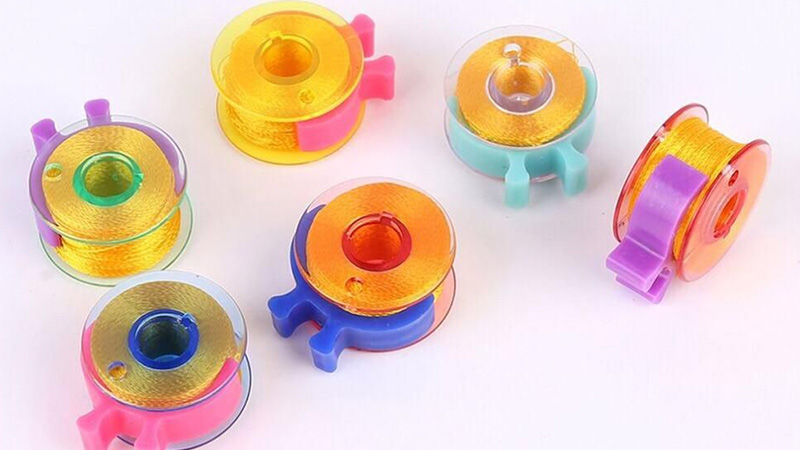
A bobbin or spool is a type of spindle or cylinder used to store yarn, thread, wire, tape, or film. A bobbin is typically cylindrical in shape, and may or may not have flanges, which are small, raised edges around the circumference of the bobbin.
Bobbins are used to store these materials in order to keep them neat and organized, which is especially important when working with delicate fabrics or other materials that can easily become tangled.
The use of a bobbin also allows for easy, efficient transportation of the materials. Bobbins come in a variety of sizes, shapes, and materials, and can range from plastic to ceramic or metal.
Depending on the materials being stored, the bobbin can be designed with specific features to accommodate different types of yarns, threads, wires, tapes, or films.
Some bobbins may have a hollow center, allowing the yarn or thread to be easily passed through it.
Other bobbins can have notches or grooves on their surface, allowing the material to be wrapped around the bobbin in a more secure manner. Bobbins are a common tool used in a variety of industries, such as textiles, sewing, and electronics.
In the textile industry, bobbins are used to store yarns and threads and can be used with a variety of weaving and knitting machines. In the sewing industry, bobbins are used to store threads and help keep them from tangling.
In the electronics industry, bobbins are often used to store wires and tapes. Overall, bobbins are an essential tool used in a variety of industries.
They provide an effective and efficient way to store and transport materials and can be designed with specific features to accommodate different types of materials.
10. Pincushion
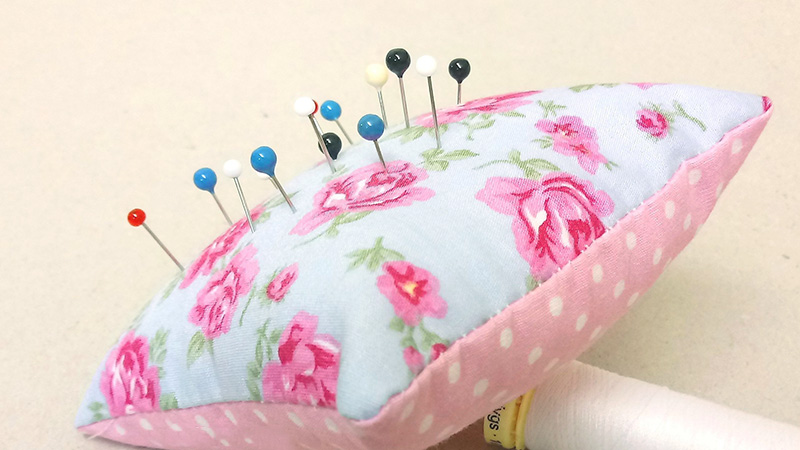
A pincushion is an indispensable tool for anyone who does a lot of sewing. It is a small, stuffed cushion, typically ranging from 3 to 5 centimeters across, which is used to store pins and needles.
The pins and needles are stored with their heads protruding so that they can be grabbed and used quickly and easily. The cushion is filled tightly with stuffing to ensure that the pins and needles remain securely in place.
Pincushions are often colorful and decorative and come in a variety of shapes and sizes. They can be used to store scissors, thimbles, and other small sewing supplies as well.
Having a pincushion handy makes it easy to keep all of your sewing tools organized and within easy reach. The pincushion is a great tool for any seamstress, quilter, or tailor.
Not only does it help to store and organize sewing supplies, but it also provides a comfortable place to rest your hands while you work. With the help of a pincushion, you can keep your workspace neat and tidy, and make your sewing projects easier and more enjoyable.
11. Needle Threader
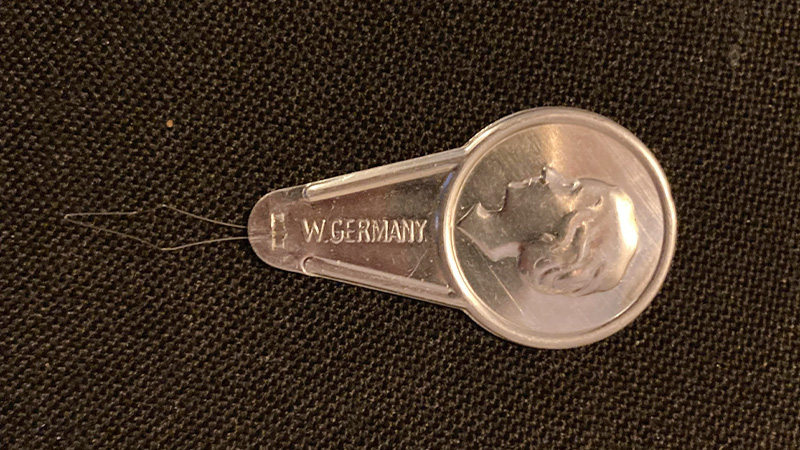
A needle threader is a tool used to make the task of threading a needle easier. It is a device that typically consists of a short length of fine wire bent into a diamond shape, with one corner held in place by either a piece of tinplate or plastic.
This device helps to guide the thread through the eye of the needle. The diamond shape of the wire is designed to make it easier to fit the thread through the small eye of the needle.
The wire is bent in a way that allows it to hold the thread secure while the user guides the threader through the eye. The corner held by the tinplate or plastic is used to pull the threader away from the needle once the thread is successfully guided through the eye.
Needle threaders come in a variety of shapes and sizes, and can be used for all sizes of needles. Some threaders have a loop of thread attached at the end that helps to make the task easier.
Others may have a spring-loaded mechanism that allows the user to insert the threader and then pull the thread through. Using a needle threader is a great way to save time and make the task of threading a needle much easier.
It can be used for all types of needles and threads, so it can be a very useful tool for those who sew or embroider.
12. Thimble
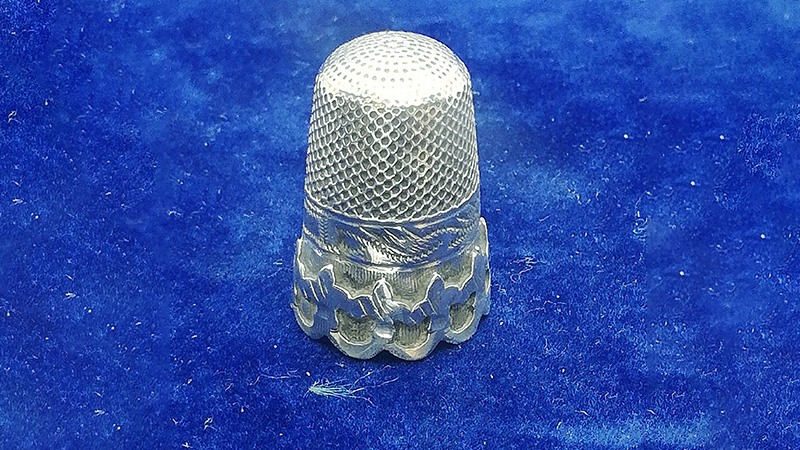
A thimble is an essential tool for anyone who sews. It is a small, pitted cup that fits over the finger to protect it from being poked or pricked by a needle.
The Old English word for thimble was “þȳmel”, and it is derived from the Old English word “þūma”, which is the ancestor of the English word “thumb”.
This connection between the thimble and thumb is quite logical since the thimble fits over the finger that is closest to the thumb when the hand is in a sewing position.
By wearing a thimble, one can sew without worrying about needles causing discomfort or injury to the finger.
13. Sewing Stick Pin
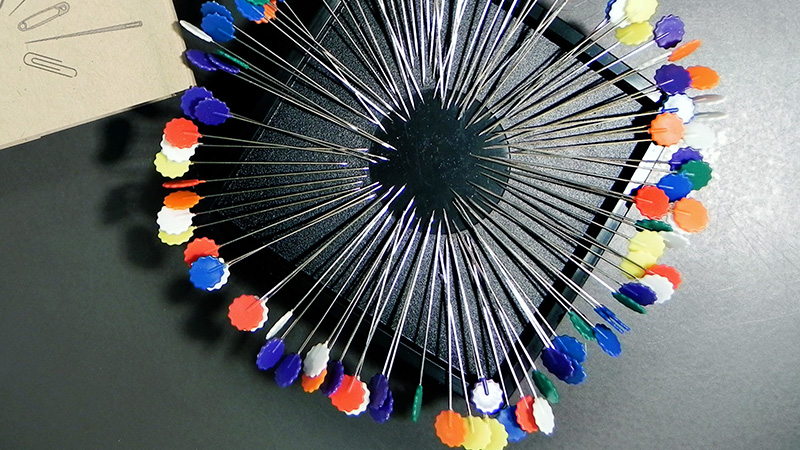
A sewing stick pin, also known simply as a stick pin, is a slender and pointed tool used in sewing and quilting. Typically measuring around 2 to 3 inches in length, it features a sharp metal tip at one end and a decorative or functional head at the other.
Sewing stick pins serve multiple purposes, including holding fabric layers together during sewing, marking fabric or patterns, and adding a touch of flair to pincushions or sewing accessories.
They are indispensable for securing delicate or intricate fabric pieces in place, ensuring precision in sewing projects and aiding in the creation of beautifully tailored garments and crafts.
14. Sewing Gauge
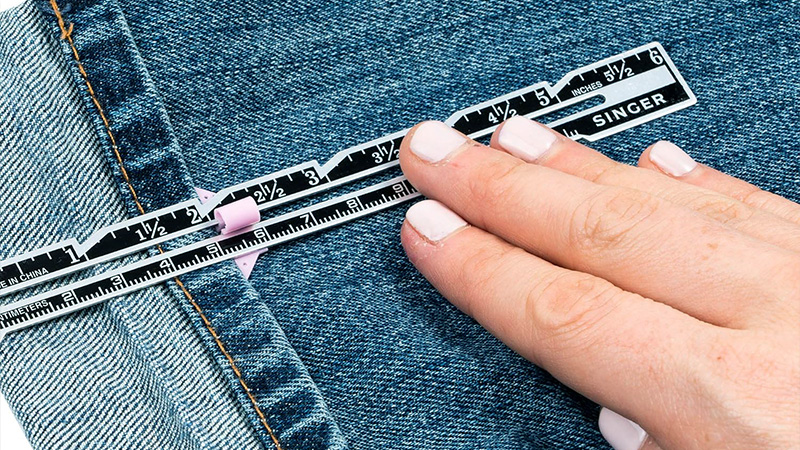
A sewing gauge is a small, handheld tool that is used for measuring small distances. It is typically 6 inches long and made of metal. The gauge features a sliding pointer that moves along the scale to measure the desired distance in either inches or centimeters.
The sliding pointer works similarly to a caliper, allowing for precise measurements. This device is essential for those who do sewing, as it can help ensure that all pieces fit together properly.
It can also be used to measure the length of a hem or the size of a buttonhole.
With its versatility and accuracy, the sewing gauge is an invaluable tool for any sewer.
15. Pinking Shears
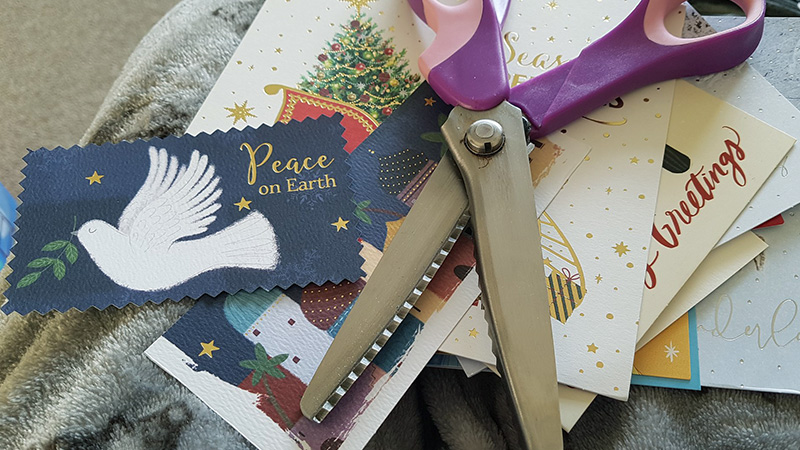
Pinking shears are a type of scissors designed with saw-toothed blades, which create a zigzag pattern along the cut edge instead of a straight line. This type of scissors is used to provide a decorative touch to fabrics such as clothing and curtains.
These shears have been around since the late 18th century, and for many years before that, a tool called a pinking punch or pinking iron was used to create a similar decorative hem.
This tool resembled a pair of scissors, but instead of blades it had a sharply pointed punch that could be used to cut small holes into fabric, allowing for a decorative hem.
The pinking punch was a popular tool until the invention of the pinking shears, which made it easier and faster to create a decorative hem. Today, both the pinking punch and the pinking shears are still used to add a decorative touch to clothing and other fabric items.
16. Ruler
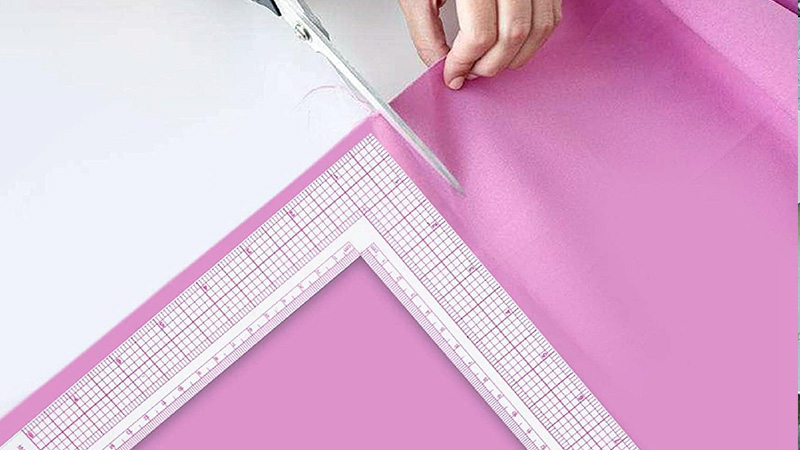
A ruler is an instrument used to make length measurements. It is sometimes referred to as a rule, line gauge, or edge gauge. It is used to measure the length of an object by reading the markings or “rules” that are along the edge of the device.
The user is able to estimate how long an object is based on the series of markings on the ruler. The different markings on the ruler represent the different measurements it can make, such as inches, centimeters, or other units of measurement.
The user can then estimate the length of the object by looking at the markings on the ruler. The ruler is an essential tool for measuring length in a variety of applications, from building and construction to sewing and crafts.
It is an efficient and accurate way to measure the length of any object, allowing the user to make precise measurements and estimates quickly and easily.
17. Cutting Mat
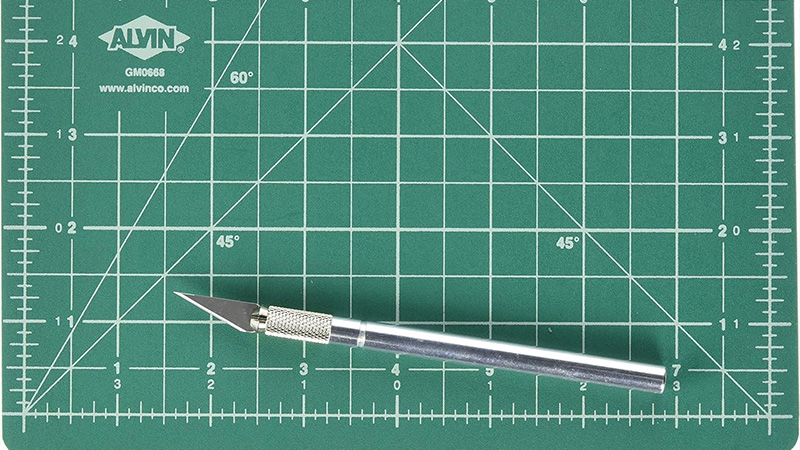
A cutting mat is an essential tool in sewing, crafting, and quilting. Typically made from self-healing PVC or other durable materials, it provides a protective and precise surface for cutting fabric, paper, or other materials.
Its gridlines and angle markings assist in accurate measurements and straight cuts, while its self-healing property ensures that it remains resilient and doesn’t show cut marks, preserving its usability over time.
Available in various sizes, cutting mats offer a safe and convenient workspace, safeguarding tabletops and providing a smooth, flat, and non-slip surface for rotary cutters or craft knives, making them indispensable for anyone engaged in precise and detailed cutting tasks.
18. Ironing Board
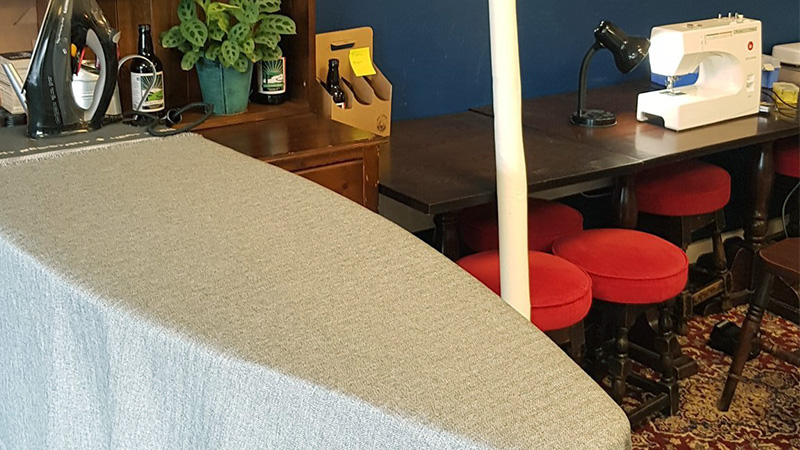
An ironing board is an indispensable household and sewing room essential. Typically consisting of a flat, padded surface supported by adjustable legs, it provides a stable and elevated platform for ironing clothes, fabrics, and sewing projects.
The padded surface minimizes wrinkles, while its adjustable height ensures comfortable and ergonomic ironing. With a fabric cover that can withstand heat, it allows for smooth gliding of the iron, enhancing the efficiency of the ironing process.
Beyond clothing care, it plays a crucial role in sewing, helping to press seams, open fabric, and prepare materials for precise stitching. An ironing board is a versatile tool for achieving polished and professional results in both sewing and garment maintenance.
19. Button

A button is a small item that is used to fasten pieces of fabric together. It is usually made of plastic, but can also be made from other materials, such as metal, wood, or even seashells.
Buttons can also be used as decorations on wallets or bags, adding an attractive touch. Buttons have been used for centuries in clothing and fashion design.
They are designed to be easy to use, simply slipping through a loop or sliding through a buttonhole.
This makes them an effective way of fastening fabric together and is a popular choice for clothing, from shirts and trousers to dresses and coats. Buttons are not only used for clothing.
They can also be used as decorations and to add a personal touch to items such as bags and wallets.
Buttons come in a wide variety of sizes, shapes and colors, making them a perfect way to express your own unique style and personality. Buttons are a versatile and affordable item that is used in many different ways.
From clothing to decorations, they can be used in a variety of ways to add a decorative touch to any outfit. Whether you’re looking for a functional fastener or a stylish statement, buttons are a great choice.
20. Bias Tape
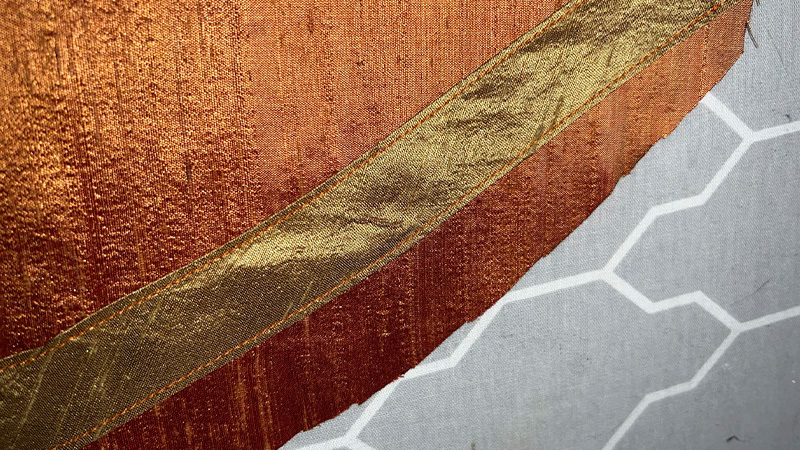
Bias tape or bias binding is a type of fabric that has been cut on the bias, rather than on the grain. This type of fabric has a 45 degree angle weave, which makes it more stretchy than fabric cut on the grain.
The extra flexibility and stretchiness makes bias tape a great choice for clothing or accessories that require a lot of movement or flexibility. Additionally, the fabric’s bias cut also contributes to its drape and its ability to conform to curves.
This makes bias tape a great choice for projects that require a lot of shaping, such as quilts or appliques. This type of fabric can also be useful for hemming garments, as it can stretch to fit the shape of the garment better than a strip of fabric cut on the grain.
Overall, bias tape is a versatile type of fabric that is ideal for projects that require flexibility and shaping.
21. Safety Pin
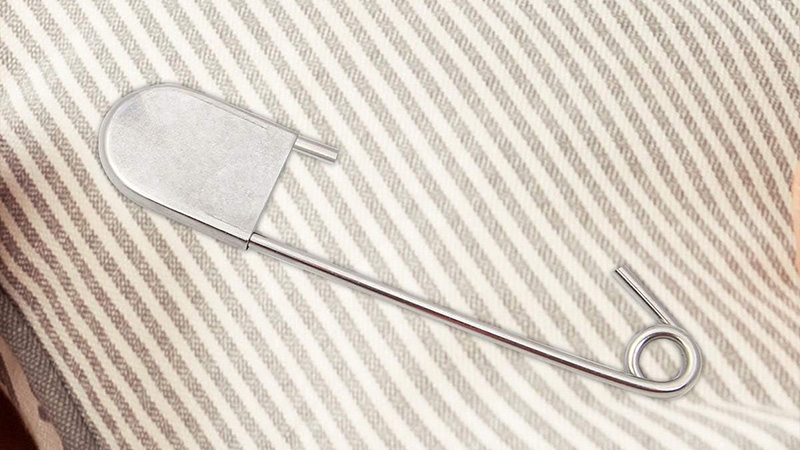
The safety pin is a useful tool that provides a secure and safe way to fasten fabrics and other materials. It is a variation of the regular pin and consists of two components – a simple spring mechanism and a clasp.
The spring mechanism allows the safety pin to open and close easily, while the clasp forms a closed loop that securely fastens the pin to whatever it is applied to.
This loop also covers the end of the pin, effectively protecting users from the sharp point.
With its spring mechanism, the safety pin can be quickly and easily applied to many different types of fabrics and other materials, eliminating the need for sewing or stitching.
It is a great option for temporarily fastening items that may need to be adjusted or removed regularly, such as clothing, bags, or curtains. Safety pins are also useful for securing items that require a secure connection, such as jewelry.
22. Tailor’s Chalk
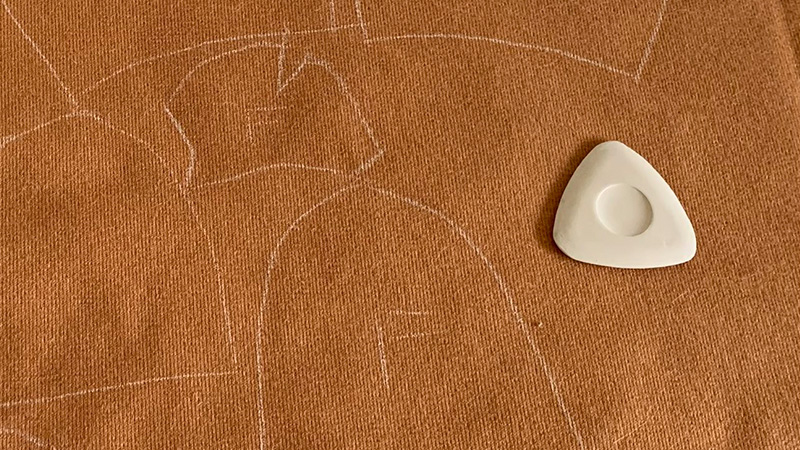
Tailor’s chalk is a versatile and indispensable tool in sewing and tailoring. Usually made from a soft, chalk-like substance in various colors, it is used for temporarily marking fabric.
Tailors, dressmakers, and sewists rely on it to indicate sewing lines, darts, button placements, and other essential marks. Its advantage lies in easy application and easy removal with a brush or a gentle swipe of a damp cloth.
The chalk’s distinct colors provide visibility on different fabric shades, making it a preferred choice for creating accurate guidelines without damaging the fabric.
Tailor’s chalk ensures precision and is an essential companion for crafting well-fitted and beautifully tailored garments.
23. Ultima 4.5” Thread Nippers – Hot Forged Precision Thread Snips
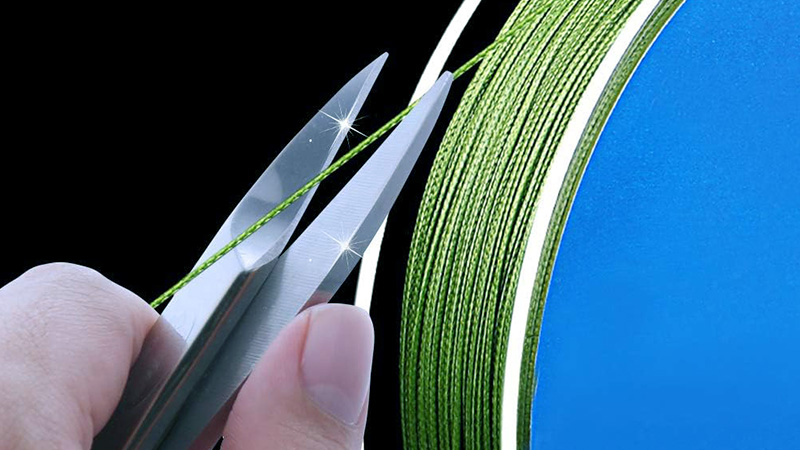
The Ultima 4.5″ Thread Nippers are a must-have tool for any sewing enthusiast or professional. These thread snips are meticulously crafted using hot forging, ensuring unparalleled precision and durability.
With their compact 4.5-inch size, they fit comfortably in your hand and provide the utmost control when snipping threads or making precise cuts in fabric.
The sharp blades effortlessly cut through threads and yarns, leaving clean edges without fraying or damaging the surrounding material.
Whether you’re quilting, embroidering, or sewing, these thread nippers are designed to make your work more efficient and accurate. Elevate your sewing experience with the Ultima 4.5″ Thread Nippers.
24. Sewing Scissors
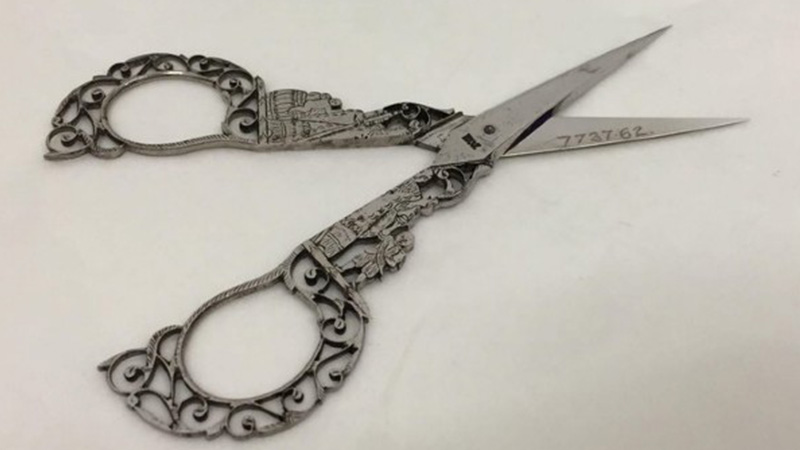
Sewing scissors are indispensable tools for anyone engaged in fabric-related crafts. Designed with precision in mind, these specialized scissors feature sharp, finely tapered blades that effortlessly cut through fabric layers without causing fraying or distortion.
They come in various sizes, from small snips for delicate work to larger shears for cutting patterns and fabric. The ergonomic handles ensure comfort during extended use.
High-quality sewing scissors are an investment, as they provide clean, accurate cuts, making sewing, quilting, and crafting projects more efficient and enjoyable. With proper care, these scissors can be a trusted companion for years of creative endeavors.
Conclusion
Having a well-rounded collection of sewing notions is like having a trusted toolbox for any DIY enthusiast. These essential tools and supplies not only simplify the sewing process but also elevate the quality of your finished projects.
Whether you’re fashioning garments, quilting, or crafting, the right notions can turn a daunting task into a satisfying and enjoyable experience. Novices can gradually build their sewing toolkit with the basics, while seasoned sewers can explore specialized tools to enhance their craftsmanship.
Regardless of your skill level, this comprehensive list of sewing notions is your guide to creating beautiful, professional-quality creations while allowing your creativity to flourish. Happy sewing!.
Leave a Reply